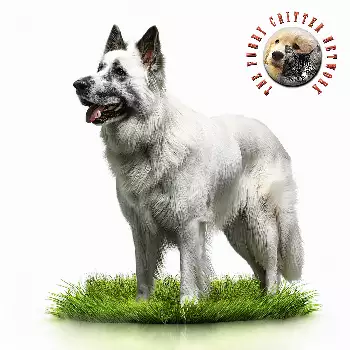The history of the Krasevec spans millennia, with roots reaching deep into the ancient pastoral traditions of the Dinaric Alps and the unique limestone landscape of Slovenia's Karst Plateau. Archaeological evidence suggests that large guardian dogs similar to the modern Krasevec have protected livestock in this region since the Bronze Age, when early Indo-European peoples first established permanent settlements and began intensive animal husbandry in the challenging mountain environment.
The distinctive Karst region, characterized by its porous limestone bedrock, underground rivers, and sparse vegetation, created unique challenges for early shepherds. Traditional grazing required dogs capable of protecting flocks not only from large predators like wolves and bears but also from the human raiders who frequently swept through these strategically important mountain passes. The isolation of individual valleys led to the development of distinct local bloodlines, each adapted to specific environmental pressures and threats.
During the Roman period, references appear in administrative documents describing large guardian dogs used by Celtic and Illyrian tribes throughout the region. Roman authors noted the fierce loyalty and protective instincts of these mountain dogs, commenting on their role in both livestock protection and settlement defense. The Romans themselves employed local dogs as auxiliaries in their military campaigns, recognizing their superior knowledge of mountainous terrain and exceptional endurance.
The medieval period brought new challenges as the region became a crossroads between competing empires and religious traditions. Mongol invasions, Ottoman expansion, and constant border conflicts created an environment where effective livestock protection became crucial for survival. Local breeding programs focused intensively on dogs capable of working independently for extended periods, making split-second decisions about threats, and coordinating their efforts with minimal human guidance.
The 17th and 18th centuries marked a period of refinement for the breed as more stable political conditions allowed for systematic breeding efforts. Wealthy landowners and monasteries began maintaining detailed breeding records, selecting for specific traits that enhanced working ability. The Karst region's position along major trade routes brought contact with guardian dogs from other regions, allowing careful outcrossing to introduce beneficial traits while maintaining the breed's distinctive characteristics.
The 19th century industrial revolution initially threatened traditional pastoral practices as economic changes drew people toward urban centers. However, the challenging terrain of the Karst region remained unsuitable for mechanized agriculture, preserving the traditional shepherd-dog partnerships that had sustained the breed for centuries. This period saw the first systematic attempts to document breed characteristics and establish breeding standards among local enthusiasts.
World War I brought devastating losses to the breed as the Karst region became a major battlefield between Austro-Hungarian and Italian forces. Many breeding lines were lost, and surviving dogs often faced starvation as traditional pastoral systems collapsed. The interwar period saw dedicated efforts to rebuild breeding populations, with enthusiasts searching remote valleys for surviving bloodlines and beginning careful reconstruction programs.
World War II and subsequent political upheavals again threatened the breed's survival. The establishment of communist Yugoslavia brought collectivization of agriculture, which initially disrupted traditional breeding practices. However, state-sponsored agricultural programs eventually recognized the value of livestock guardian dogs, leading to renewed breeding efforts in the 1960s and 1970s.
The establishment of an independent Slovenia in 1991 brought new focus to preserving national heritage breeds. Modern breeding programs emphasize both maintaining traditional working ability and adapting to contemporary needs. Genetic analysis has helped maintain breed diversity while establishing clear breeding protocols. International recognition through the FCI has brought global attention to this remarkable breed, though most Krasevec dogs continue to work in their traditional role protecting livestock in the rugged mountains of their homeland.
Today, the Krasevec represents a living link to thousands of years of pastoral tradition. Modern breeding programs work to preserve not only the physical characteristics that make these dogs exceptional guardians but also the behavioral traits and working instincts that have been refined through countless generations of selection in one of Europe's most challenging environments.

